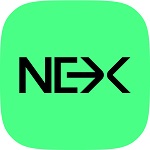 | TitaniumICO TBIS – Titanium Blockchain Infrastructure Services is an Infrastructure as a Service platform that allows entire IT enterprises can be hosted on the Ethereum blockchain. IMPORTANT: By investing in this business you agree to ourDisclaimer. All information including our rating, is provided merely for informational purposes. CryptoTotem does not provide investment advice. |
Overview
|
Technical details
Unlike typical infrastructure services, where a company’s technology may exist on up to several hundred devices, the TBIS infrastructure will reside on the decentralized Ethereum blockchain, which is composed of over 20,000 nodes, with each node potentially being composed of several hundred discreet systems. Even if several thousand nodes experienced a system failure, there would still be zero outage time, and perhaps, only a performance degradation of the TBIS services being delivered.
What is Titanium
This article is an in-depth review of the Titanium blockchain infrastructure, its initial BAR - and later – TBAR, token, concept and all that it entails. We will look at its mission, prospects, roadmap, and the hurdles it faced back in 2018 when the United States Securities and Exchanges Commission (SEC) filed to have ICO halted and assets frozen. We will examine the infrastructure they purposed to put in place to, as expressed in their own the Titanium whitepaper, “to build a better internet that cannot be controlled or destroyed by anyone and is open for all.”
Where Titanium Blockchain Infrastructure Comes In
Michael Stollaire is the founder and president of TBIS. He also runs another company that specializes in providing IT solutions and strategies. The company is called EHI-INSM and has been doing quite well. The EHI stands for Excellence, Honesty and Integrity, which are the company ethos and these to reflect in their white paper.
In its course of operations, EHI-INSM came to these about the fallibility of the internet as it is today. With the advent of blockchain technology, Mr. Stollaire increasingly saw the potential offered by this new technology and decided to act. He founded TBIS to be a sister company of EHI to create begin development on a blockchain-based ecosystem that could finally supplant the current Internet model.
Why Titanium Blockchain Infrastructure Would Be A Better Option
Blockchain is at its core a distributed technology. In operates on the concept that nodes on a network have to reach a consensus before a new block is authorized. In the scale needed to support the TBIS, it would mean that the system would run on cloud-based Virtual Machines supported by the computing power of billions of nodes, from servers to personal computers. It would handle routing, switching and server functionality all on a distributed system. This concept sounds wonderful on white paper and it immediately becomes clear that downtimes would effectively be reduced to zero.
Another advantage of such a system is the inherent security that a blockchain platform offers. By being consisted of a large number of nodes it means that a hacker would have to hack at least a majority of them to inflict any real damage. Some features would naturally be inbuilt to prevent DDoS attacks among other common threats. While it would not rule out fallibility, it would vastly improve security for all users involved. These are generalizations of what such a system is capable of achieving, but to understand it better we’ll first take a look at how it works.
Titanium Blockchain Concept
As mentioned above the TIBS project looks to create a better infrastructure for the global interconnection of devices in a distributed and secure manner. The team hopes that with the necessary support and development such a system could eventually take the place of the internet. The ecosystem would also take over the functionalities of routers, switches, and servers on conventional networks, a feat made possible by the fact that these functions have nowadays evolved to a point where they are accomplished on a software level. Essentially, all that hardware in the telecom rooms could be made obsolete if TBIS were to find a working model.
The model involves 3 service levels of the ecosystem that would each serve the specific needs it is tailored to fulfill.
- Infrastructure as service (IaaS) – TBIS already has a virtualization system that allows in the creation of network components like routers, servers, and switches. This can be expanded to include distributed enterprise IT environments, which would help to reduce the cost to consumers. The service would also support web hosting through the Titanium Virtual Server System which could potentially offer 100% uptime capabilities. All elements would make use of the unique Titanium Hydra Fault Tolerance Suite for autonomous healing and security purposes.
- Platform as a service (PaaS) – this would be an environment in the ecosystem that would allow users to create, test and run applications on the platform in two ways: as a cloud service with the user using the TBIS infrastructure to deploy applications, or as a private service inside a firewall deployed as a service.
- Desktop as a service (DaaS) – with this service a user will essentially be able to have his entire computer virtualized and hosted securely on cloud through the TitaniumOS. They will then be able to access it from anywhere in the world using any device, and be able to use it just as if it were the real thing. The machine will be kept secure through unique Shake-256 Titanium Sponge Cryptographic Systems and remain accessible through a Titanium Key.
- Company as a service (CooS) – This is envisioned as a wizard that will enable anyone to start a business and transact securely through the use of Smart Contracts. It is meant to overcome the many legal and accountability hurdles that many people face when starting new businesses especially those that operate online.
Other services will include:
- Crypto EscrowTM – a system that will act in two ways between buyer and seller to ensure delivery and payment. A simple interface will allow these two users to enter into an agreement which will comprise a Smart Contract. A two-part SHA256 hash will then be generated and each part given to either party. Once the transaction is complete the two parts are joined and the funds paid out from escrow.
- Bring Your Own Server (BYOS) – a cloud-based system that will allow mining to be carried on securely and with custom tools so long as they meet the system requirements. Alternatively, there will be tools available via the MlaaS TBIS offering.
Other functions such as web servers and file servers
- DEX exchange – TBIS will eventually create its own decentralized exchange to host the top twenty fiat currencies in the world as well as the top two hundred cryptocurrencies. They guarantee to charge the lowest fees in the world.
The BAR And Subsequent TBAR Token
The agglomeration of all these services would in practice act as its own internet, working through existing physical medium but on a more robust and redundant digital platform. The Titanium Infrastructure Services coin was thus put in place to act as the default token in the TBIS ecosystem. Initially called BAR, it was offered in a private offering and then in a public ICO running for 3 months between December 2017 and March 2018. A total of $20 million was raised out of a hard cap target of $35 million.
The 2018 BAR Hack And Issue Of TBAR
In February the company announced that hackers had infiltrated its wallets and made away with 16 million BAR tokens, about a quarter of the total supply. This was alarming news at the very least and the company moved quickly to counteract this incident by forking to the TBAR coin. All the stolen BAR tokens were replaced with TBAR even though the stolen ones soon resurfaced in exchanges and were trading for $0.25 for one bar down from the purchase price of $1 for 1 BAR.
On May 4 the American Securities and Exchange Commission obtained an injunction against TBIS and had their assets frozen. Among the claims they filed was that Michael Stollery (the President) had lied about the links they had with top-ranking firms like Boeing, PayPal, Verizon, Walt Disney among others, including the Federal Reserve. Apparently, they had run a star-studded graphic on their testimonials including the whitepaper claiming support and partnership with these companies, which were hastily denied. (More information can be had on this CCN article dated 30th May 2018).
After The Legal Standoff: What Next For TBIS
The sad thing is that after this the company went silent and did not even publish an official statement. Even after allegations that Stollery had used part of the ICO proceedings to pay for a condo in Hawaii, no official reply is on record to refute or confirm these claims. The SEC has since gone on to label the Titanium ICO a scam and set up a receiver for the recovered funds, and those who were defrauded in the offering can reach them here for assistance.
Indeed, a crackdown on fake ICOs has since begun – since April 2018 – because the whole saga is now being viewed as a classic case of an ICO scan. This excellent CCN article also has information on the crackdown by Canada and USA joint teams.
DetailsPre-sales: Dec 31, 2017 - Dec 31, 2017Public sales: Jan 01, 2018 - Mar 01, 2018 Token supply: 60,000,000 BAR Soft cap: 1,000,000 USD Hard cap: 35,000,000 USD Raised: 20,000,000 USD LegalBlockchain Platform: EthereumRegistration country: United States Registration year: 2017 Office address: 15027 Dickens Street, Suite 4, North Hollywood, CA, 91403, USA BountyBounty: 10% | Token infoTicker: BARType: Utility-token Token standard: ERC-20 Token price in USD: 1 Token = 1 USD Accepted currencies: BTC, ETH, XVG, XMR Bonus program: 15% first day 10% next 2 days 5% next 2 days Token distribution: 60% - Community 20% - TBIS team 10% - Bounties 10% - Reserve pool Funds allocation: 30% - Platform Development and Maintanance 30% - Auditors and Consultants 20% - Legal and Accounting 10% - Business Growt and Development 10% - Other and Reserve |
Titanium Roadmap
- Sale
- Business Plan Adjustment
- Updated Plan Release
- Core Platform Release
- Testing
- Audit + Revisions
- Launch
- Marketplace
- Testing
- Audit + Revisions
- Launch + Hackaton
- Design
- User-designed Contracts
- Developement + Testing
- Audit + Revisions
- Release
Project team














Advisors
















One Response
SEC Obtains Preliminary Injunction in Fraudulent Coin Offering Scheme: https://www.sec.gov/litigation/litreleases/2018/lr24160.htm